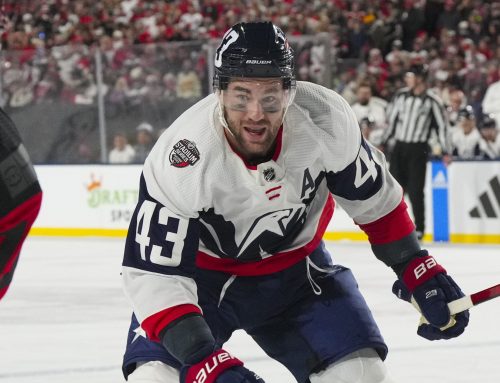Capped: Keeper League Cap Value
Eric Daoust
2013-12-05

Daoust discusses cap league strategies including dealing with impending UFAs.
In keeper leagues, general managers are faced with a variety of challenges. Some want to win now and equip their teams accordingly. Others want to build for tomorrow and focus on players who will be ready to peak at a later time. Regardless of your approach, there are events that can suddenly change a player’s fantasy appeal and throw a curveball in your plans. This includes a change of teams, a new opportunity created or even an injury.
In cap leagues contract renewals often change a player’s fantasy value overnight. In some instances a player that was previously a solid contributor in your league can become a liability if his new deal carries a heavy cost. It is important to track your own pending free agents and sense potential problems before it is too late. This can be seen as a form of selling high if you can ship out a soon-to-be albatross contract for a more reasonable salary that can keep your team competitive.
Phoenix Coyotes’ defenseman Derek Morris is an example of a player that could be up for a decent raise in the near future. After failing to crack the 20-point mark since the 2010 campaign, Morris was almost certainly on your league’s waiver wire back in early October.
After a hot start, Morris has proven to be a valuable contributor and his salary of $2.75 million, which is close to the league average, does not hurt your payroll. His 13 points in 20 games represent a strong number for points-only leagues where productive defensemen can be difficult to find. In multi-category leagues if you add his points with a plus-5 rating, 10 PIM, 41 hits, 29 blocks and 28 shots on goal you will find a strong all-around contributor.
As a defenseman, assessing value in salary cap keeper leagues can be complicated. Blueliners that excel at one end or the other are able to earn big contracts. However, those who are elite at both ends will usually earn the biggest salaries. The important point to retain is that it is possible for defensemen to earn contracts larger than their value in your league if their skill set extends beyond your scoring categories.
For Morris his next contract could spell the end of his value in cap leagues if he earns a cap hit in the neighborhood of $3.5 or $4 million.
While he is producing points at the moment, he has been an offensive disappointment for the most part in recent years. This kills his worth in points-only leagues and makes him more of a risk in multi-category leagues. His peripherals should remain constant but without a dominant category or two he remains a depth option on defense.
Besides, if Morris suddenly has a salary well above the league average, would it not be better to drop him and invest in a cap bargain defenseman that can produce similar numbers in future years? Then, you can use the savings to either absorb other contract renewals on your roster or poach a talent from one of your cash-strapped rivals.
There is a good chance that Morris finds himself on your league’s waiver wire again next fall.
*
Another important factor in managing your salary cap keeper league team is being able to identify future cap bargains. Obviously, your existing cap bargain players are playing above their pay level and it is only a matter of time before they get their due cash. Thus, if you do your homework and take advantage of farm positions that might be available in your league, you just might have your next cheap producer in-house when it is time to make cuts on your main roster.
One prospect that should be on everyone’s radar for multi-category leagues is Dallas prospect Curtis McKenzie. After an unspectacular college career, McKenzie signed an entry-level contract with the Stars but did not have a great outlook as an NHL prospect.
This year, McKenzie has produced above expectations with eight goals and 11 assists along with 31 PIM and 76 shots in 23 games.
While not the most talented player in the world, McKenzie’s strength and work ethic allow him to do the little things that help make more talented linemates better. His size (6’2, 205) allows him to dominate along the boards and around the net.
In terms of opportunity, one thing that works in McKenzie’s favor is that his style of play can make him a valuable fourth-liner in the NHL. Thus, he may get favored for a promotion if an injury happens or if the team needs an energy boost. Once his foot is in the door the hits and PIM will come immediately.
On the offensive side of the puck, expect the points to translate more slowly to the NHL especially if he is stuck in a minimal role for a few years. It is possible that his fantasy production is limited to hits and PIM along with more points than the typical goon. Over time he could evolve into a good secondary scorer that pitches in with good peripheral stats. As a player that is not expected to produce much offensively in his early NHL days, do not expect his cap hit to climb much higher than the current $645,000 mark for the foreseeable future.
In roto leagues, McKenzie might play a key depth role for your team in the not-too-distant future. This is the same team that gave Antoine Roussel a chance to shine.
Previously in Capped:





 CAR
CAR NYI
NYI BOS
BOS TOR
TOR VAN
VAN MTL
MTL EDM
EDM WPG
WPG DET
DET
